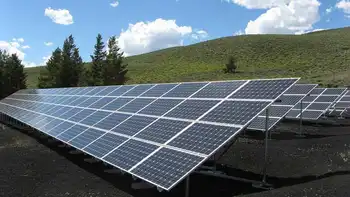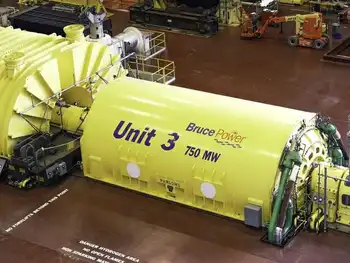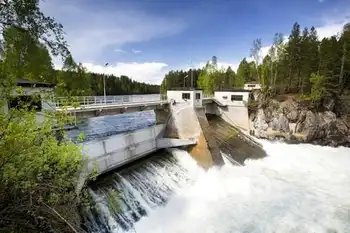USAID Delivers Mobile Gas Turbine Power Plant to Ukraine

CSA Z463 Electrical Maintenance -
Our customized live online or in‑person group training can be delivered to your staff at your location.

- Live Online
- 6 hours Instructor-led
- Group Training Available
USAID GE Mobile Power Plant Ukraine supplies 28MW of emergency power and distributed generation to bolster energy security, grid resilience, and critical infrastructure reliability across cities and regions amid ongoing attacks.
Key Points
A 28MW GE gas turbine from USAID providing mobile, distributed power to strengthen Ukraine's grid resilience.
✅ 28MW GE gas turbine; power for 100,000 homes
✅ Mobile deployment to cities and regions as needed
✅ Supports hospitals, schools, and critical infrastructure
Deputy U.S. Administrator Isobel Coleman announced during her visit to Kyiv that the U.S. Agency for International Development (USAID) has provided the Government of Ukraine with a mobile gas turbine power plant purchased from General Electric (GE), as discussions of a possible agreement on power plant attacks continue among stakeholders.
The mobile power plant was manufactured in the United States by GE’s Gas Power business and has a total output capacity of approximately 28MW, which is enough to provide the equivalent electricity to at least 100,000 homes. This will help Ukraine increase the supply of electricity to homes, hospitals, schools, critical infrastructure providers, and other institutions, as the country has even resumed electricity exports in recent months. The mobile power plant can be operated in different cities or regions depending on need, strengthening Ukraine’s energy security amid the Russian Federation’s continuing strikes against critical infrastructure.
Since the February 2022 full-scale invasion of Ukraine, and particularly since October 2022, the Russian Federation has deliberately targeted critical civilian heating, power, and gas infrastructure in an effort to weaponize the winter, raising nuclear risks to grid stability noted by international monitors. Ukraine has demonstrated tremendous resilience in the wake of these attacks, with utility workers routinely risking their lives to repair the damage, often within hours of air strikes, even as Russia builds power lines to reactivate the Zaporizhzhia plant to influence the energy situation.
The collaboration between USAID and GE reflects the U.S. government’s emphasis on engaging American private sector expertise and procuring proven and reliable equipment to meet Ukraine’s needs. Since the start of Putin’s full-scale war against Ukraine, USAID has both directly procured equipment for Ukraine from American companies and engaged the private sector in partnerships to meet Ukraine’s urgent wartime needs, with U.S. policy debates such as a proposal on Ukraine’s nuclear plants drawing scrutiny.
This mobile power plant is the latest example of USAID assistance to Ukraine’s energy sector since the start of the Russian Federation’s full-scale invasion, during which Ukraine has resumed electricity exports as conditions improved. USAID has already delivered more than 1,700 generators to 22 oblasts across Ukraine, with many more on the way. These generators ensure electricity and heating for schools, hospitals, accommodation centers for internally-displaced persons, district heating companies, and water systems if and when power is knocked out by the Russian Federation’s relentless, systematic and cruel attacks against critical civil infrastructure. USAID has invested $55 million in Ukraine’s heating infrastructure to help the Ukrainian people get through winter. This support will benefit up to seven million Ukrainians by supporting repairs and maintenance of pipes and other equipment necessary to deliver heating to homes, hospitals, schools, and businesses across Ukraine. USAID’s assistance builds on over two decades of support to Ukraine to strengthen the country’s energy security, complementing growth in wind power that is harder to destroy.











